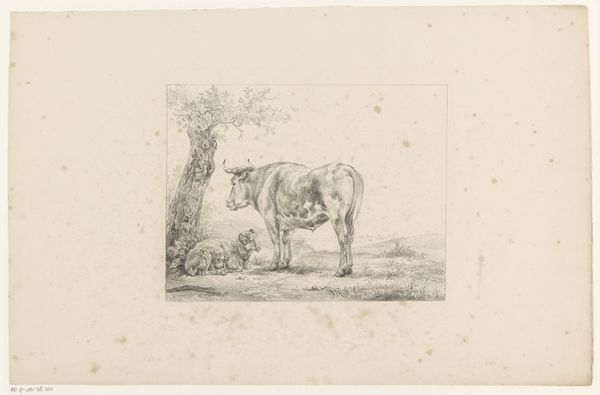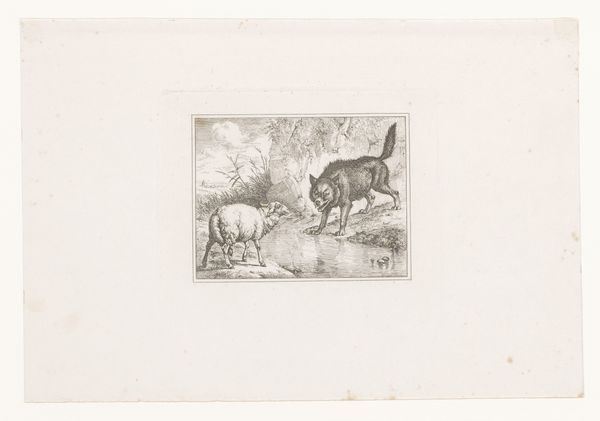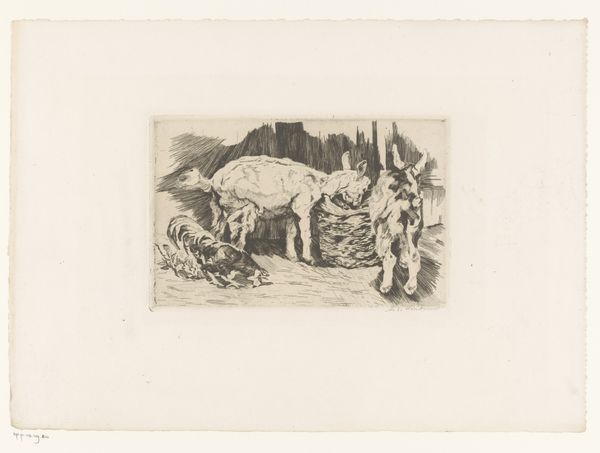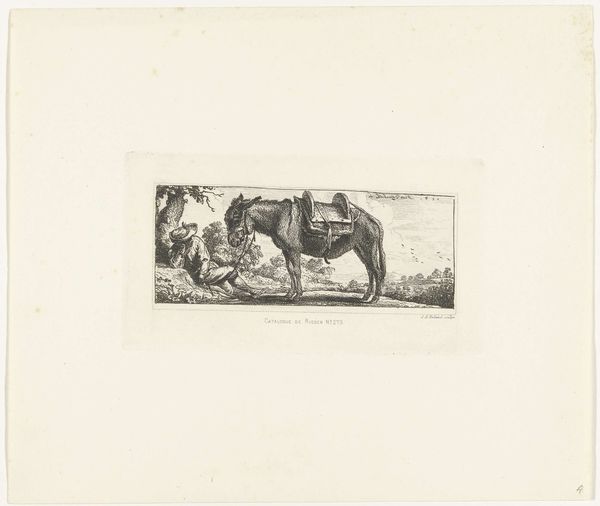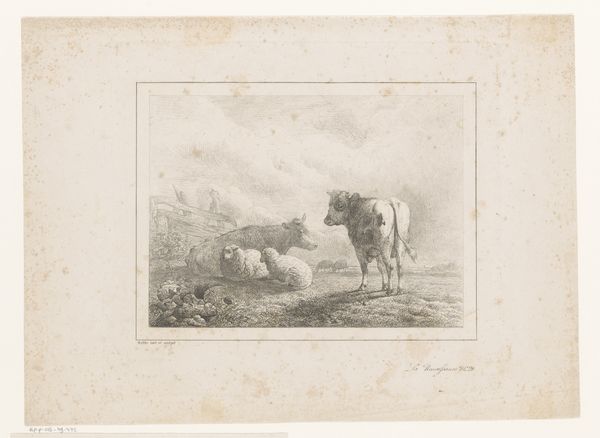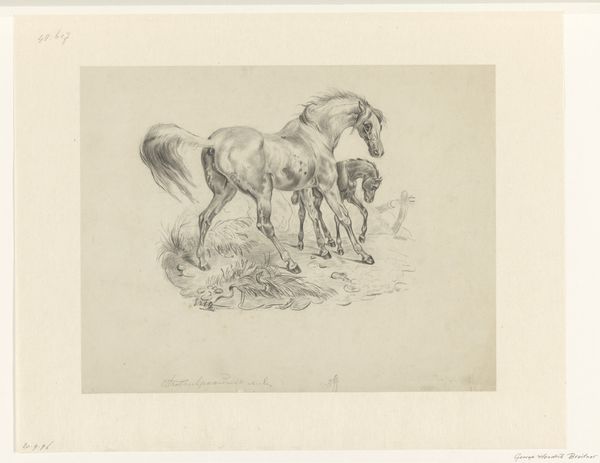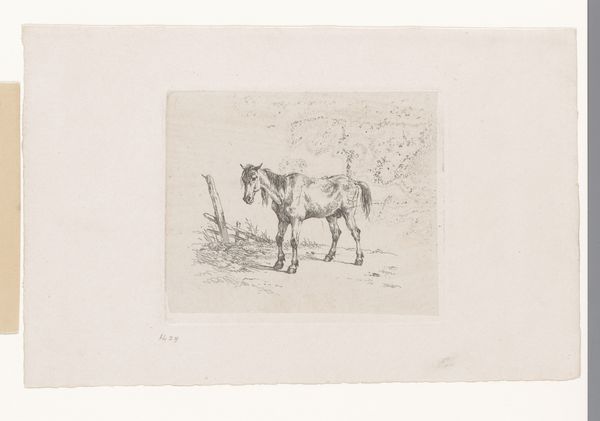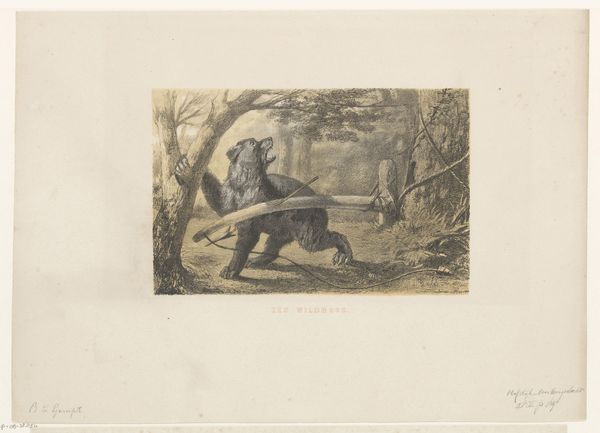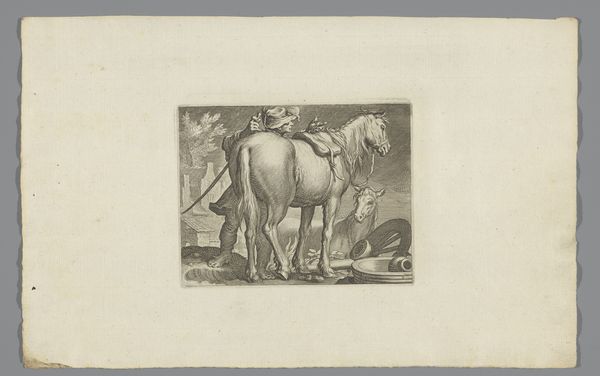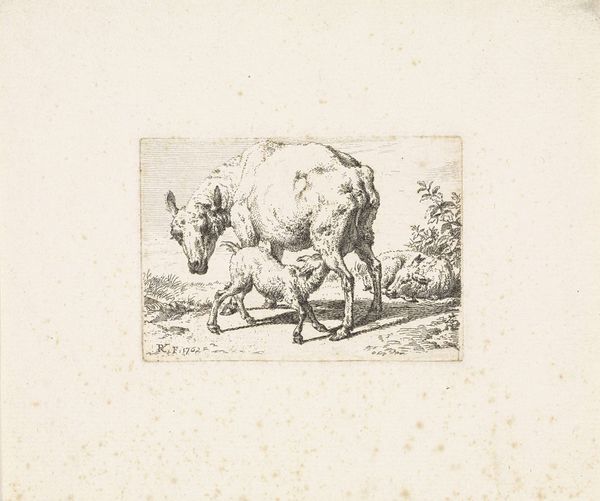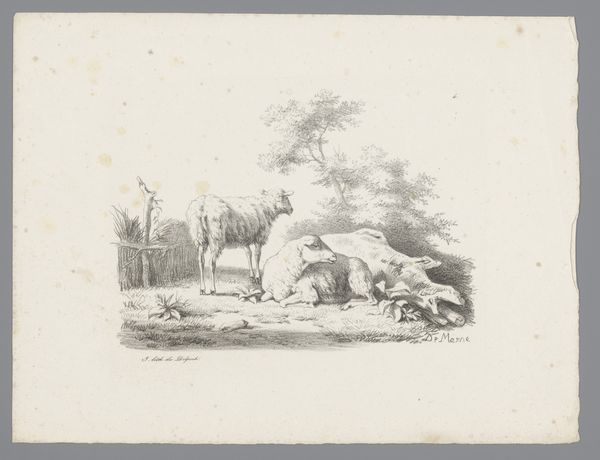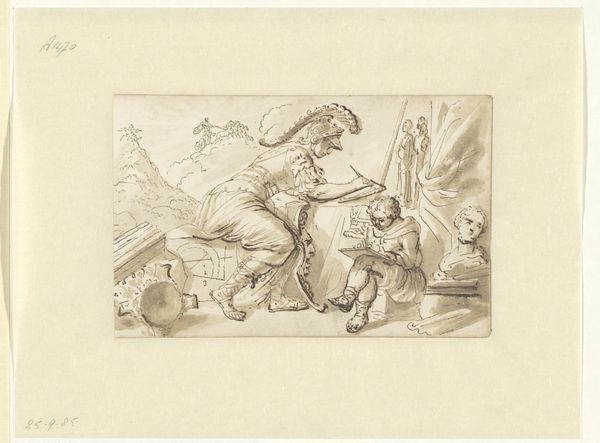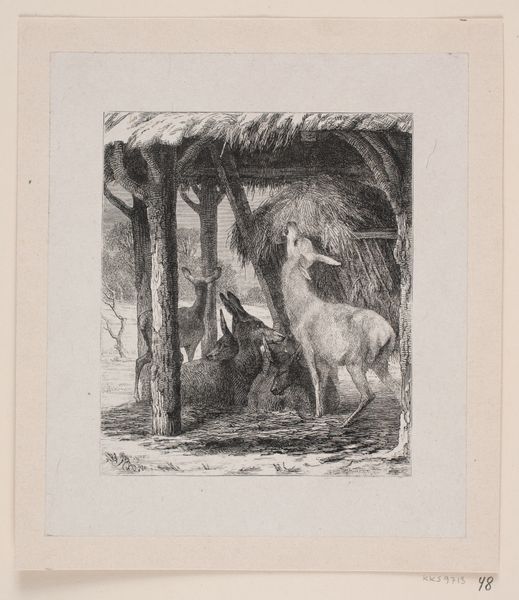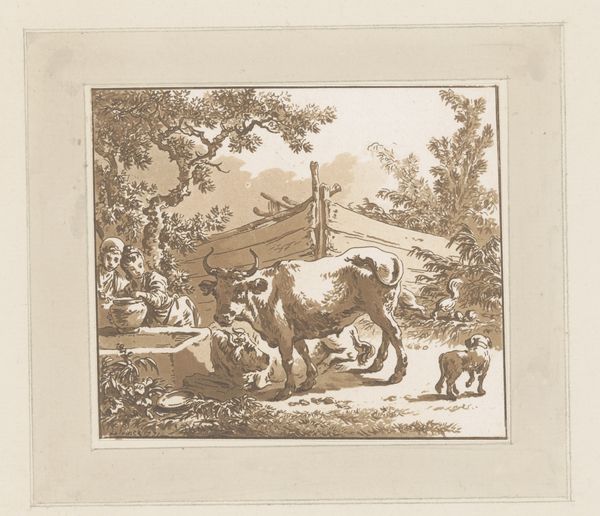
print, etching
#
narrative-art
# print
#
etching
#
landscape
#
etching
#
figuration
#
realism
Dimensions: height 104 mm, width 130 mm
Copyright: Rijks Museum: Open Domain
This print, *Fabel van de twee muildieren*, was made by Eugène Verboeckhoven using etching, a printmaking technique that relies on the controlled erosion of metal. Verboeckhoven would have coated a metal plate with a waxy, acid-resistant substance, then scratched an image into the wax. Acid then bites into the exposed metal, creating lines that hold ink. It’s a process that demands careful planning, and great technical skill. The image is satirical and depicts a muddled landscape, where one mule lies on the ground, apparently in distress. The other mule, burdened with sacks, looks on, seemingly indifferent. In the background, onlookers observe the scene. There’s an interesting tension here, as the sharp clarity of the etched lines allows for a detailed image. Yet the print as a whole is murky, perhaps reflecting the exploitation of labor. The artist’s choice of etching as a medium is telling; it allows for multiple reproductions, making art accessible to a wider audience, but also hinting at the industrialization of art production. Verboeckhoven skillfully uses technique to make a statement about labor and class. By focusing on these modes of production, we see this artwork through a wider social and political lens.
Comments
No comments
Be the first to comment and join the conversation on the ultimate creative platform.
